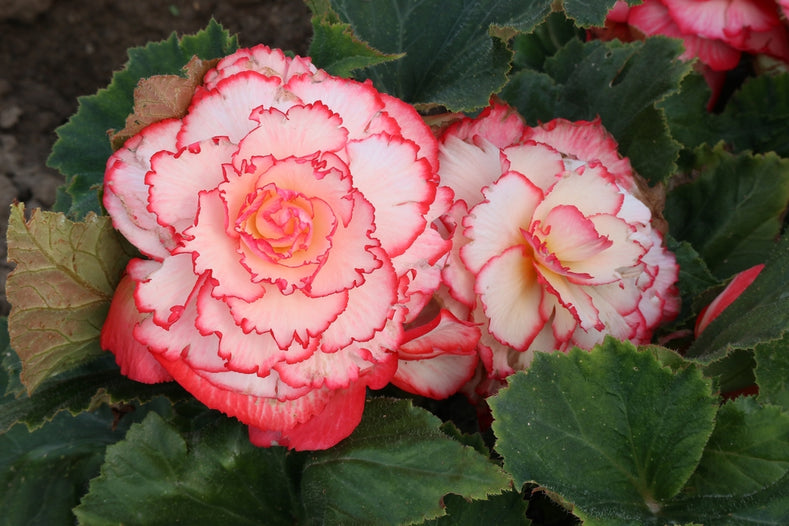Begonias, a captivating genus of flowering houseplants, find their most common applications in flower beds, pots, and hanging baskets. They offer a kaleidoscope of shapes, colours, and sizes, casting their vibrant charm in shaded outdoor spaces and indoor displays. With an extended flowering season that typically spans from summer until the arrival of the first frost, they are a delightful addition to any garden.
Begonias exhibit remarkable adaptability, flourishing whether they bask in sunlight or reside in the shade. This versatility allows them to transform even the darkest corners of your garden into stunning, vibrant summer showcases.
Tuberous begonias emerge from sturdy, rounded tubers, capable of growing both erect and cascading. Depending on their growth pattern, they serve as exceptional ornamental plants for various settings, including pots, window boxes, flower beds, large planters, and hanging baskets. Most tuberous begonias present sizeable, exquisite blossoms, reminiscent of roses, showcasing a dazzling array of vivid and luminous hues to delight flower enthusiasts.
Planting Your Begonias
Originating from tropical climates, begonias thrive with ample light but require protection from intense heat. Optimal locations for them include areas that bask in morning sunlight while enjoying shade in the afternoon.
In colder climates, begonias can be initially cultivated indoors, especially if you intend to transplant them into your garden when the weather permits. To embark on this indoor journey, place the tubers in a shallow tray filled with potting mix, ensuring they are hollow side up and spaced 1 inch apart. Store the tray in a dimly lit room, providing just enough water to keep the potting mix moist without saturating it. Within approximately four weeks, the tubers should sprout, at which point you can transfer them to a brighter location with ample light. Maintain them indoors until the threat of frost has fully receded.
When it's time to transplant the tubers, bury them 1 inch deep and maintain a spacing of 10 to 12 inches if they are destined for the garden. When planting them in indoor pots and window boxes, you can arrange them slightly closer together. Employ well-draining, fertile soil to ensure your begonias reach their full potential.
Caring for Begonias
- Water your begonias moderately every few days, ensuring that the soil remains consistently moist but not waterlogged. Be cautious not to overwater, as tubers are susceptible to rot in excessively wet conditions, and potted plants may experience stem rot.
- Nourish your begonias with a balanced fertiliser to support their growth.
- For ground-planted begonias, consider applying a modest layer of mulch around the plants to preserve moisture, making sure not to smother the stems. Potted begonias do not require mulching.
- Maintain the begonias' appearance by deadheading throughout the season. Trim spent or decaying flowers about an inch below the bloom to prevent infections and promote plant health.
- Reduce watering towards the end of the growing season.
- Allow the flowers to naturally wither, and when the foliage turns yellow, trim it.
- Prior to the arrival of the first frost, carefully excavate the tubers. Remove excess soil and allow the tubers to dry in a sunny location for a week. Store them individually in paper bags or wrap them in newspaper for safekeeping.


